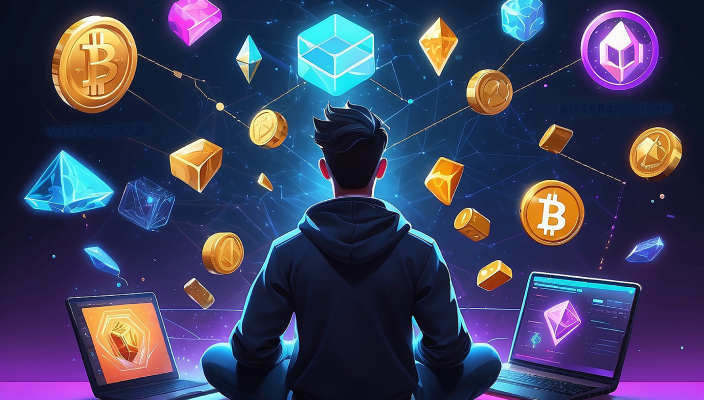Decentralized Finance (DeFi) is revolutionizing the financial industry by enabling peer-to-peer transactions without the need for traditional intermediaries like banks. DeFi apps, powered by blockchain technology, have become an integral part of the growing decentralized economy. But what makes a DeFi app stand out? In this article, we’ll cover the top features that ensure maximum user engagement in DeFi app development and why partnering with a professional DeFi Development Company is essential.
DeFi: Overview
Decentralized Finance (DeFi) is reshaping how we think about financial transactions. Built on blockchain technology, DeFi allows for the development of decentralized applications (dApps) that enable users to lend, borrow, trade, and invest without traditional financial institutions. The DeFi ecosystem is rapidly expanding, providing people with secure and transparent financial alternatives.
What is a DeFi App?
A DeFi app is a decentralized application built on blockchain technology that provides financial services such as lending, borrowing, trading, and investing without intermediaries. Unlike traditional banking apps, DeFi apps operate autonomously through smart contracts, making the process more efficient and less reliant on central authorities.
How Do DeFi Apps Work?
DeFi apps utilize smart contracts on a blockchain network to facilitate transactions. These apps use tokens or cryptocurrencies as the medium of exchange, allowing users to engage in financial activities like lending, borrowing, or staking. Smart contracts automatically execute the terms of an agreement once predefined conditions are met, removing the need for third-party intermediaries.
Key Market Takeaways for Decentralized Finance
DeFi is gaining significant traction in global markets, with increasing numbers of users turning to decentralized financial solutions for their speed, transparency, and security. Some key takeaways include:
- DeFi platforms have surpassed billions in total value locked (TVL), reflecting growing user interest.
- Popular use cases include lending and borrowing, yield farming, and decentralized exchanges (DEXs).
- The DeFi ecosystem is expected to grow even further as traditional institutions explore decentralized solutions.
Understanding The Different Types of DeFi Apps
DeFi apps can be categorized into various types, each providing specific services:
- Lending/Borrowing Platforms: These platforms allow users to lend or borrow crypto assets at competitive interest rates without intermediaries.
- Decentralized Exchanges (DEXs): DEXs facilitate peer-to-peer trading of crypto assets without a central authority.
- Yield Farming/ Staking Platforms: Users can earn rewards by staking their tokens or providing liquidity to DeFi protocols.
- Stablecoins: DeFi apps offering stablecoins pegged to fiat currencies provide stability in the volatile crypto space.
Key Features of DeFi Applications
Liquidity Pools
Liquidity pools allow users to contribute their crypto assets to decentralized exchanges, providing liquidity in exchange for rewards. These pools are the backbone of DeFi trading and ensure users can swap assets seamlessly.
Staking
Staking enables users to lock their assets in a smart contract to support the network and earn staking rewards. It’s a win-win feature as users benefit from their staked tokens while supporting the DeFi protocol’s stability.
Lending and Borrowing
DeFi lending and borrowing platforms let users lend their assets to others in exchange for interest or borrow by providing collateral. This decentralized approach removes the need for credit checks and traditional lending bureaucracy.
Token Swaps
DeFi apps offer decentralized token swaps, enabling users to exchange one cryptocurrency for another instantly. This feature is particularly useful in decentralized exchanges (DEXs), where peer-to-peer trading occurs without a centralized intermediary.
Development Steps for a DeFi App
Building a DeFi app requires a systematic approach, including:
- Identify the Niche: Determine the specific type of DeFi service you want to offer (e.g., lending, DEX, staking).
- Design Smart Contracts: Develop and audit smart contracts to ensure secure and automated functionality.
- Front-End and Back-End Development: Create an intuitive user interface and integrate blockchain on the back-end.
- Testing and Auditing: Thoroughly test the app to ensure security and functionality before launch.
- Launch and Maintenance: Once live, continuously monitor and update the app to keep up with security updates and market trends.
Tech Stack for DeFi App Development
The tech stack for DeFi app development typically includes:
- Blockchain Platforms: Ethereum, Binance Smart Chain (BSC), and Solana.
- Programming Languages: Solidity (for smart contracts), JavaScript, and Python.
- Frameworks: Truffle, Hardhat for smart contract testing and deployment.
- Web3.js or Ether.js: For interacting with the blockchain.
- Wallet Integrations: MetaMask, Trust Wallet for seamless user transactions.
Cost of Developing DeFi Apps
The cost of developing a DeFi app can range from $50,000 to $500,000, depending on the complexity of the features and the blockchain used. Factors such as smart contract complexity, UI/UX design, and blockchain network fees can significantly impact the overall cost.
Cost-Affecting Factors to Consider for DeFi App Development
Several factors influence the cost of developing a DeFi app:
- Blockchain Choice: Different blockchains have varying transaction fees and security features.
- Smart Contract Auditing: Auditing smart contracts is essential for security but can be costly.
- UI/UX Complexity: A more polished user experience may increase the cost of front-end development.
- Development Team Expertise: Experienced developers with blockchain skills tend to charge higher fees.
How Long Does It Take to Build a DeFi App?
On average, developing a DeFi app can take anywhere from 4 to 9 months, depending on the complexity of the features, smart contract auditing, and testing phases.
Develop a DeFi App with Webllisto
Webllisto, a leading DeFi Development Company, has extensive expertise in building DeFi apps tailored to your specific needs. Our team specializes in DeFi Lending and Borrowing Platform Development and ensures a seamless, secure, and highly functional app. With deep knowledge of blockchain technology, we deliver top-notch solutions that empower businesses to enter the DeFi space with confidence.
Conclusion
DeFi apps have taken the financial world by storm, offering transparency, security, and control to users. By integrating features like liquidity pools, staking, lending, and token swaps, DeFi apps ensure maximum user engagement. If you’re looking to develop a cutting-edge DeFi app, partnering with an experienced DeFi Development Company like Webllisto is essential for success.
FAQs
Q1: What does DeFi mean?
DeFi, or Decentralized Finance, refers to financial services provided on decentralized blockchain networks, enabling peer-to-peer transactions without intermediaries.
Q2: How does a DeFi lending platform work?
DeFi lending platforms allow users to lend their crypto assets to others and earn interest, or borrow assets by providing collateral, all without traditional banking intermediaries.
Q3: What are the benefits of staking in DeFi?
Staking allows users to earn rewards by locking their assets in a smart contract to support the network. It’s a passive income opportunity in the DeFi space.
Q4: How long does it take to develop a DeFi app?
The development time depends on the complexity of the app, but typically, a DeFi app can take 4 to 9 months to build from scratch.
Q5: Why choose Webllisto for DeFi development?
Webllisto has a team of blockchain experts with extensive experience in DeFi development, ensuring secure, scalable, and feature-rich solutions tailored to your needs.
Q6: What types of DeFi apps can Webllisto develop?
We specialize in developing a wide range of DeFi apps, including decentralized exchanges (DEXs), lending and borrowing platforms, yield farming protocols, staking platforms, and insurance solutions. We can tailor our services to meet your specific needs.
Q7: How do smart contracts function in DeFi apps?
Smart contracts are the backbone of DeFi apps. They automate transactions and enforce agreements without intermediaries. At Webllisto, we ensure your smart contracts are secure and optimized for performance to enable seamless operations.
Q8: Can I integrate multiple blockchain networks in my DeFi app?
Yes, we can develop cross-chain DeFi apps that integrate multiple blockchain networks, like Ethereum, Binance Smart Chain, and Solana, to provide greater flexibility and enhance user experience.
Q9: How do you ensure security in DeFi app development?
Security is paramount in DeFi. We follow best practices like thorough code audits, multi-layer security protocols, and regular vulnerability assessments to safeguard your app from exploits and attacks.
Q10: What is yield farming in DeFi, and can it be integrated into my app?
Yield farming allows users to earn rewards by providing liquidity to DeFi protocols. We can integrate yield farming features into your app to attract users looking to maximize their returns on crypto assets.
Also Read: Innovative use cases of defi by top defi development companies
http://webllisto.com/innovative-use-cases-of-defi-by-top-defi-development-companies/









































